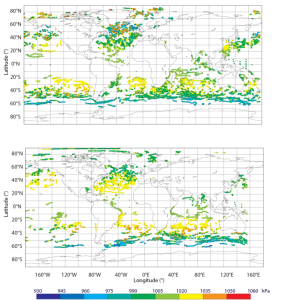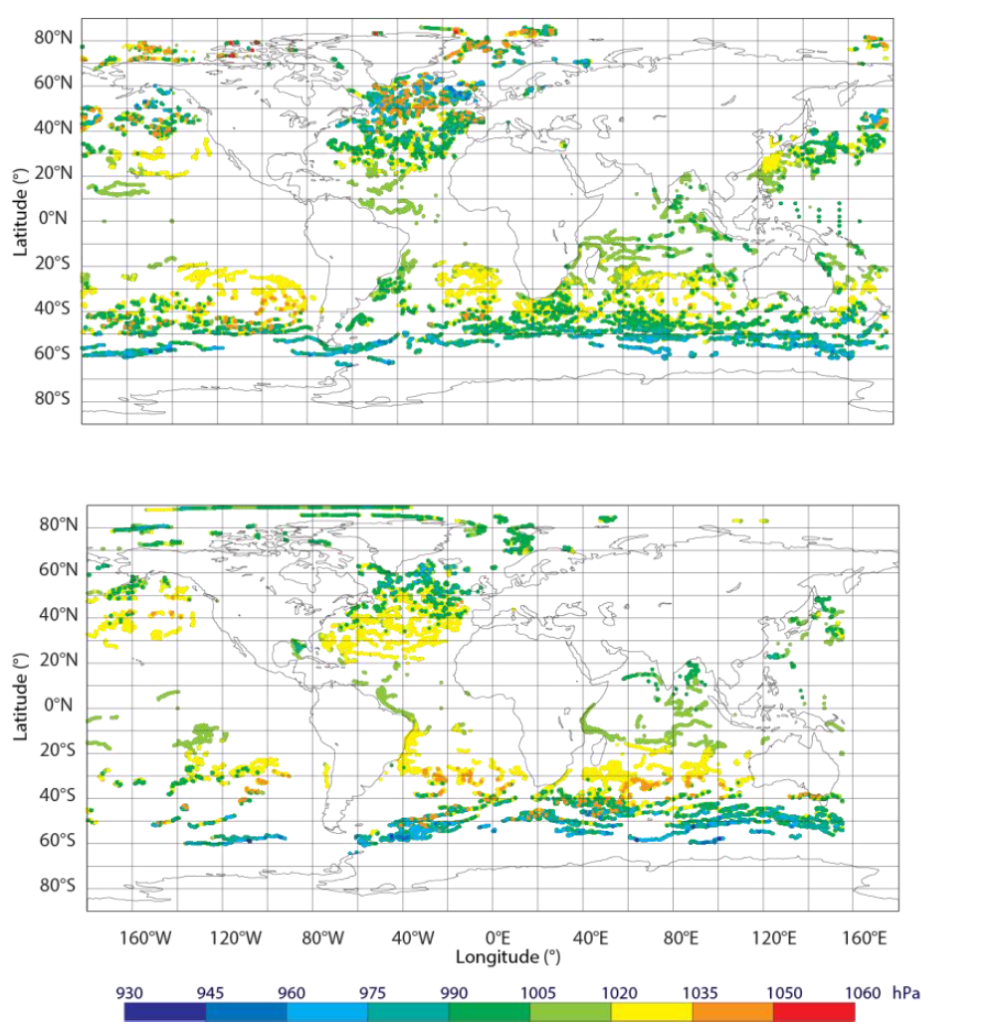Sea Level Atmospheric Pressure Data Crucial for Marine Weather Forecasts, Says New Study
 A first-ever assessment of in situ sea level atmospheric pressure data (SLP) from NOAA’s Global Drifter Program and other international partners demonstrates that surface velocity drifters, equipped with barometers and floating mostly on the extra-tropical regions, contribute crucial information for marine weather prediction. An early edition of the study’s report appears online in the Bulletin of the American Meteorological Society.
A first-ever assessment of in situ sea level atmospheric pressure data (SLP) from NOAA’s Global Drifter Program and other international partners demonstrates that surface velocity drifters, equipped with barometers and floating mostly on the extra-tropical regions, contribute crucial information for marine weather prediction. An early edition of the study’s report appears online in the Bulletin of the American Meteorological Society.
Partly supported by CPO’s Climate Observation Division, the study highlights the role of SLP drifter data for numerical weather prediction—especially in regions lacking in situ measurements. According to the report, SLP data is the most valuable on a per-observation basis for improved weather forecasts when compared to other components of the Global Ocean Observing System.

Researchers used data from observing system experiments and forecast sensitivity observation impact analysis. Their report also states that improved marine weather forecasting enhances observations of atmospheric air circulation, which influences ocean surface waves, intensifying storms, and Earth’s water cycle. These data are used extensively for climate models, diagnostics, and indexes.
Abstract:
Since 1994 the US Global Drifter Program (GDP) and its international partners cooperating within the Data Buoy Cooperation Panel (DBCP) of WMO-UNESCO have been deploying drifters equipped with barometers primarily in the extra-tropical regions of the world’s oceans in support of operational weather forecasting. To date, the impact of the drifter data isolated from other sources has never been studied. This essay quantifies and discusses the effect and the impact of in situ sea-level atmospheric pressure (SLP) data from the global drifter array on numerical weather prediction using observing system experiments and forecast sensitivity observation impact studies. The in situ drifter SLP observations are extremely valuable to anchor the global surface pressure field and significantly contribute to accurate marine weather forecasts, especially in regions where no other in situ observations are available, like, for example, in the Southern Ocean. Furthermore, the forecast sensitivity observation impact analysis indicates that The SLP drifter data is the most valuable per-observation contributor from the Global Observing System (GOS). All these results give evidence that surface pressure observations of drifting buoys are essential ingredients of the GOS and their quantity, quality and distribution should be preserved as much as possible in order to avoid any analysis and forecast degradations. The barometer upgrade program offered by the GDP, under which GDP funded drifters can be equipped with partner-funded accurate air pressure sensors, is a practical example of how the DBCP collaboration is executed. Interested parties are encouraged to contact the GDP to discuss upgrade opportunities.
Access the full paper: http://journals.ametsoc.org/doi/pdf/10.1175/BAMS-D-15-00080.1